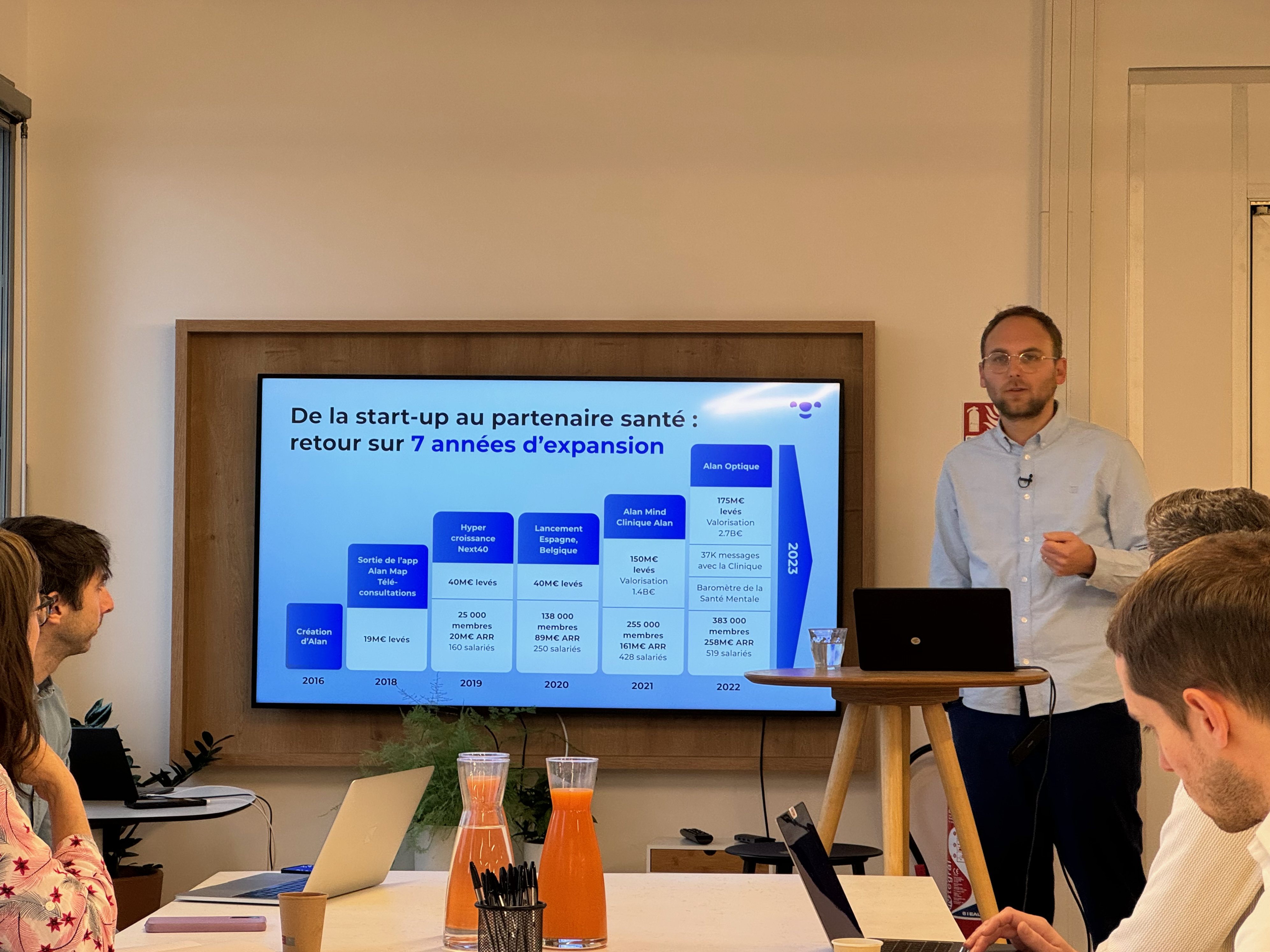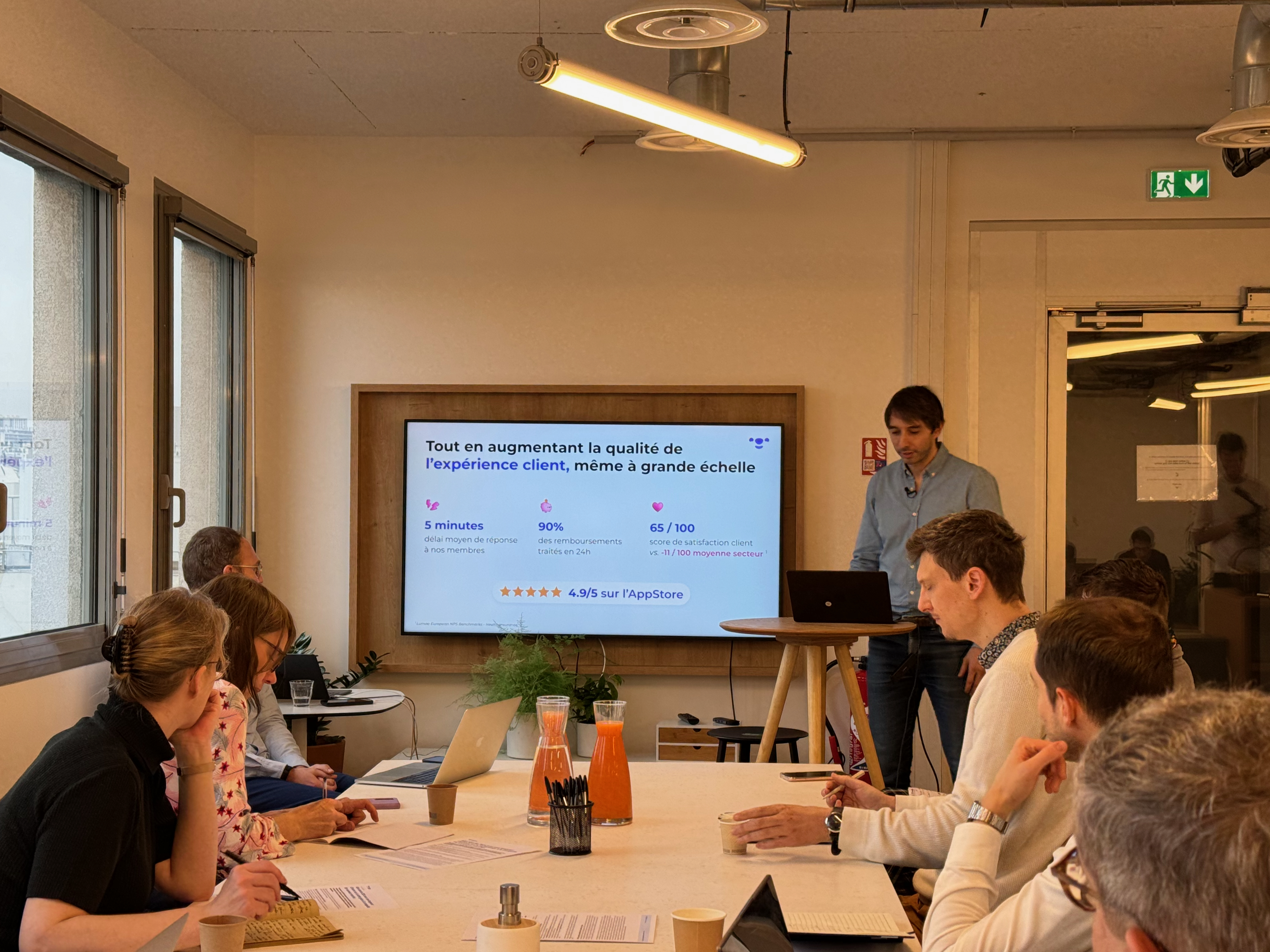How a French health insurance unicorn plans to leverage AI to reach profitability

Alan’s meteoric rise in the French tech ecosystem has been both figurative and literal. A few years ago, the startup’s office was limited to one floor in a nondescript office building near the Canal Saint-Martin in Paris.
Over time, the company added another floor, then another floor — now the company of 550 employees also occupies the top floor of the building. It’s a common area with a kitchen in a corner and a beautiful view of Paris’ typical gray zinc rooftops.
This morning, Alan’s co-founder and CEO Jean-Charles Samuelian-Werve and its chief revenue officer, Ludovic Bauplé, held a press conference with a group of reporters. Some of them cover tech startups, while others focus on the insurance industry. It’s an unusual mix of reporters but that’s because Alan is an unusual company.
The company originally started with a health insurance product that complements the national healthcare system in France. French companies must provide a health insurance product to all their employees when they join. Today, over 500,000 people are covered by Alan’s insurance product.

But Alan is also a tech company that has raised quite a few funding rounds. With its most recent €183 million Series E funding round ($196 million at today’s exchange rate), the company reached a valuation of €2.7 billion ($2.9 billion).
Alan has integrated and automated as many things as possible for its core product, the insurance part. It has also expanded to other services so that its app can be a sort of a one-stop shop for all things related to your health.
After years of explosive growth, the French tech ecosystem has slowed down with funding drying up and many companies looking for a quick exit — unless you’re working for a generative AI company. As Alan is one of the biggest private tech companies in France, it’s interesting to keep a close eye on the company to understand how it sees the future.
Still $63 million in losses in 2023
Despite 39% of revenue growth in 2023 compared to 2022, Alan is still losing quite a bit of money. In 2023 alone, the company reported $63 million in losses (€59 million).
But things are improving. Last year, 5,000 companies became new clients. In France, Alan is no longer the hip health insurance company for tech startups, as new clients include Celio, Duracell, Mantu, and Clinitex, as well as the employees of France’s National Assembly.
Alan also operates in Belgium and Spain. And the difference is quite clear in Spain, for instance, as Alan names N26, Cabify and Eventbrite as new clients in the country — in other words, tech companies with local teams in Spain.
“Profitability is a core topic for us. Our goal has been to reach profitability in 2025 for France. And we are confirming it once again,” Bauplé said. As for other markets, the company says that it expects to be profitable as a whole in 2026.
“Our cash position is more than €180 million. Our solvency ratio is now 450%, which is well above the minimum requirement and twice the market average,” Bauplé added.

Does it mean that Alan is done with funding rounds? This part is a bit unclear, as it has become much harder to raise late-stage rounds at high valuations. Things could change. And of course, never say never.
“We don’t need to raise a new round to stay on plan and maintain this growth rate until we reach profitability,” Samuelian-Werve said later in the conversation. “At the same time, we’ve received unsolicited offers from investors in the past . . . we’ll continue to look at them, but today that’s not really our strategy.”
Growing revenue, not costs
Alan’s path to profitability includes growing the company’s bottom line without necessarily growing much as a team. Right now, Alan has a gross margin of 10% after deducting all health reimbursements. But if you include all expenses, the net margin becomes negative at –17%.
In 2024, Alan expects to grow its revenue by 40%. But the company only plans to hire 30 people — a modest 5% increase in its workforce.
That’s because Alan’s service has been designed to scale well without necessarily adding more people. It’s a self-serve app and service. Reimbursements are automated as much as possible with optical character recognition, a fraud engine that has been developed in-house, automated bank transfers, etc.
Preventive care in the app is also a big part of Alan’s offering with a focus on eight different topics ranging from mental health to back pain. This part is mostly handled by a library of videos and 80 health professionals who partner with Alan to answer questions via a messaging interface.
Alan also says that artificial intelligence is going to be key when it comes to scaling. Like with many customer support teams today, some of the interactions between Alan’s customers and its team are optimized by artificial intelligence.
But all teams leverage artificial intelligence in one way or another. Alan CEO Samuelian-Werve told me that every employee is now 40% more productive.
They get meeting reports much faster thanks to automatic transcriptions and LLM-powered summaries. They use Dust to query AI assistants with the team’s data. Developers can iterate faster thanks to AI copilots.
Samuelian-Werve also happens to be a non-executive co-founder and board member of Mistral AI, France’s much talked about foundational model maker. In fact, Mistral AI’s office is located in the same building as Alan’s office.
While it’s harder to raise massive funding rounds in France, artificial intelligence might appear as an alternative to ever-growing teams at Big Tech companies like Alan.
That might not work for every tech company, as Alan’s internal culture is quite peculiar. Everything is written down and fully transparent with regular check-ins from teammates. Nevertheless, it’s a pragmatical example of the real-world impact of artificial intelligence on the financial outlook of a tech company at the growth stage.
